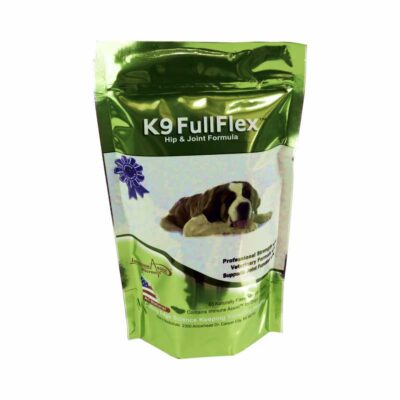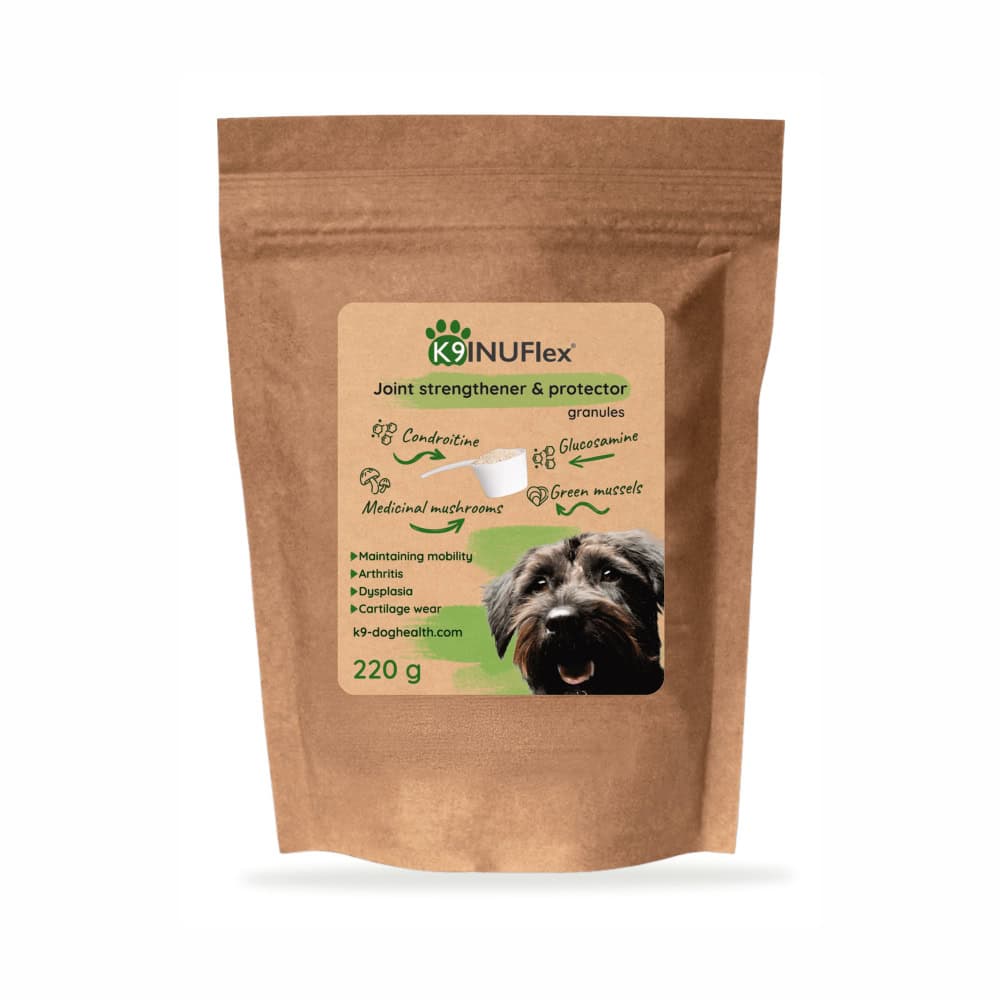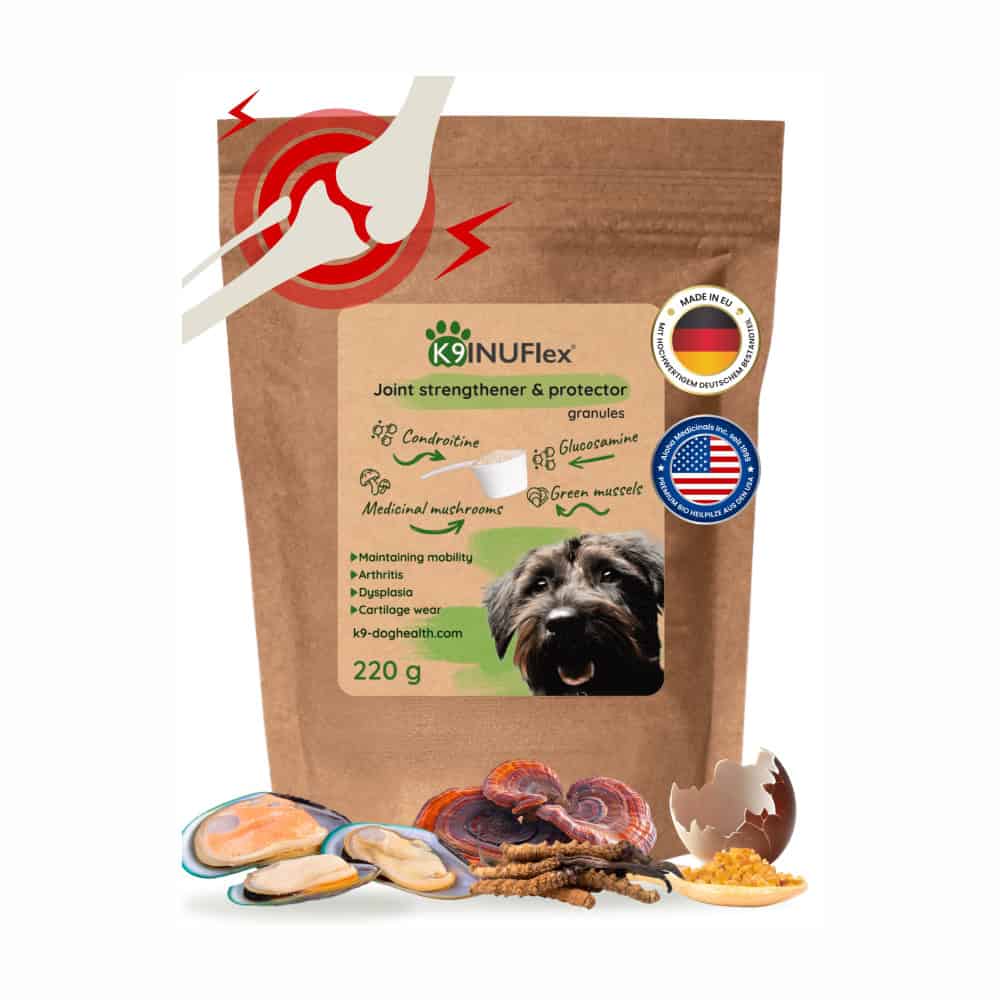Dog joint supplement – for walks that bring joy again
Does your dog struggle to get up or hesitate before jumping into the car or chasing a ball? The problem may not be age – it’s often joint discomfort. A well-formulated dog joint supplement can help restore ease of movement and joy to everyday life. These supplements not only relieve pain but also support long-term joint health and mobility – whether your dog is a playful pup or a loyal senior companion.
Each canine joint supplement in this category is designed to:
- support joint health and flexibility,
- reduce inflammation and discomfort,
- promote natural cartilage regeneration,
- and help maintain freedom of movement at every age.
Why start joint support early?
As dogs age – especially medium and large breeds – their joints lose elasticity, cartilage wears down, and inflammation can develop. But you don’t have to wait until the signs are obvious. Choosing a high-quality dog joint supplement or glucosamine for dogs at the first signs of stiffness can help delay further deterioration. The best joint supplement for dogs supports mobility and quality of life before problems take hold.
Premium quality, thoughtfully selected ingredients
K9 INUFlex® and K9 FullFlex™ combine proven ingredients for complete joint support:
- Glucosamine and chondroitin to help preserve cartilage structure and elasticity,
- Green lipped mussel and hyaluronic acid to support synovial fluid and joint cushioning,
- Boswellia serrata as a natural anti-inflammatory,
- ESM (eggshell membrane) to promote the repair of tendons, ligaments, and cartilage,
- Immune Assist™ mushroom blend and colostrum to support overall immune function and recovery.
These advanced dog joint supplements aren’t just for dogs with visible joint issues – they’re also ideal for active dogs, working dogs, or as a preventative for growing pups.
Easy daily use – powder or tasty soft chew
Products in this category are available as a mixable powder or a flavorful chew – making it simple to fit into your dog’s daily routine. Both forms are well-tolerated and loved by dogs, so you can skip the struggle with pills and enjoy smooth, stress-free joint support.
Who should take a dog joint supplement?
- Senior dogs showing stiffness or reduced mobility
- Active or working dogs needing extra support
- Younger dogs for early joint protection and prevention
- Dogs recovering from joint surgery or injury
Why choose joint support from K9 INU®?
- Vet-recommended, premium-quality formulations made with carefully sourced, natural ingredients
- K9 INUFlex® and K9 FullFlex™ are backed by science and trusted by dog owners
- Fast shipping and expert customer support before and after your order
Help your dog move easier and live better – choose a trusted dog joint supplement that supports them every step of the way!
Showing all 2 results
-

K9 FullFlex™
- Treatment of cartilage wear and arthritis
- To reduce the development of dysplasia and relieve its symptoms
- To preserve the mobility of dogs
€57,00 -


K9 INUFlex®
- Restores natural movement – visible results in 10 days
- Relieves joint pain and supports cartilage regeneration
- Natural anti-inflammatory – with mussel & Boswellia
- Strengthens joints and ligaments – safe for daily use
€41,40